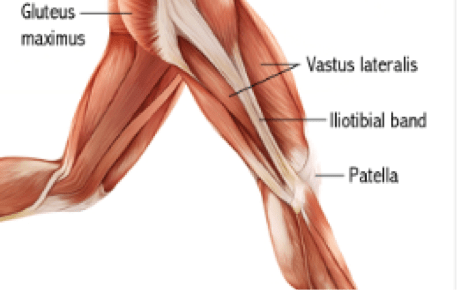…. not just for runners
Many of us out there may have encountered the pain of a runner’s knee, a.k.a. iliotibial band syndrome (ITBS). A nasty, sharp and localised pain on the outside of your knee, it can be tricky to resolve, and really puts the stoppers on training. Scour the internet and you’ll find lots of reported remedies, but it’s hard to know what really works and how to know if your self-directed rehab is working or not. So what can you do?

1) Get the right diagnosis.
A few things certainly point towards the presence of ITBS/Runner’s Knee, but ruling out other problems through a professional examination is probably best, and will stop you starting your recovery the wrong way.
If you can’t get to a physio, then look out for a few key features:
Sharp pain on the outside of the knee with a focal point no bigger than two finger tips.
An onset of pain normally associated with a change in training volume e.g. marathon training build up ; a change in running surface e.g cambered road ; an increase in downhill running. Squats or descending stairs is also likely to be painful when aggravated.
Pain that starts at a fairly consistent time into a run or cycle, and slowly builds until it starts to inhibit, often forcing you to curtail exercise prematurely.

2) Understand the cause
The ITB is a really thick and resilient piece of fascia with multiple attachments that runs the length of the outside of the upper leg. It’s primary job is to provide stability to the hip and knee. There have been several reincarnations of theories explaining ITBS, but what we now know is that excessive, often repetitive loading can compress and sensitise a portion of adipose tissue underneath the distal portion of the ITB.
3) What are your options?
There are lots of ways to unpick ITBS and your physiotherapist can help your to work through this systematically by looking at your training history, testing for kinetic chain weaknesses, examining your running gait and guiding you through a progressive return-to-run regime. Backing off running (or your main aggravating activity) is probably sensible – but only to a degree. Complete abstention from running is a last resort. Here are a few things you can do for yourself:
- Work out how far you can run with low level pains/no pain and keep your exercise within this volume. Cross-train where possible – avoid complete rest.
- Avoid training on hilly terrain or cambers.
- Insert short walking breaks / rest breaks into your exercise to allow fatigue recovery BEFORE your pain ramps up. This will allow you to exercise for longer.
- Look to strengthen your quadriceps, glutes and, in particular, your hip stabilisers
- Think about your running style – do your knees brush when you run? Does your gait scissor? These are some of the signs that your running style may be part of the problem.
- Save yourself hours of pain, and avoid foam rolling the ITB. There’s a place for soft tissue work, but evidence shows that rolling the ITB is not going to make it longer and has limited benefits (Geisler and Lazenby, 2017).
USEFUL LINKS
This article was written by Frankie Chesterton, of Flex Physiotherapy Practice in Didcot, Oxfordshire (www.flexphysiopractice.com) on (19/11/20)
DISCLAIMER:
Blog publications on this site are for informational purposes only. They do not replace the need for professional medical assessment. It is the users’ responsibility to evaluate their own medical and physical health, and seek professional input before acting on any information reported in this blog.
The views and opinions expressed in this blog are solely those of the original author and do not necessarily represent the views of Flex Physio Practice staff and/or any/all contributors to this site. The information published is only considered accurate at the time of publication. Flex Physio Practice and it’s staff cannot be held liable for damages resulting from the use and interpretation of the information in this blog.